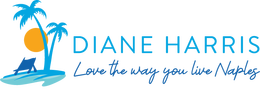Have you ever looked at your bank statement and realized they are charging you a considerable monthly fee for the privilege of using your money? Banks vary in the fees that they charge. Your best protection against hidden fees is to find out which ones your financial institutions enforce.
Fees can eat away at your money if you don’t keep on top of your banks enforced regulations. U.S. consumers paid $15 billion in overdraft fees in 2016, according to the Consumer Financial Protection Bureau. Here are a few bank fees you can look out for:
Overdraft Fees
These are often charged in response to bounced checks or a debit charge when the customer doesn’t have enough money in their account to cover a transaction. The average amount consumers overdraft by is about $24, according to the CFPB. But most banks charge about $34 in fees for each overdraft.
To avoid these fees, don’t sign an opt-in form from your bank, which allows it to cover a transaction that you don’t have enough money for in your account. The CFPB is trying to change the consent forms for overdraft service to make the fees more clear to customers.
Overdraft fees on checks and online bill payments will remain on the updated form, but consumers can opt out of receiving overdraft protection for debit cards and ATM usage.
Overdraft Transfer Fees
This related fee can be charged to automatically transfer funds from another account to your checking account to prevent a check from bouncing.
Typically $10, the overdraft transfer fee can be avoided by setting up low-balance alerts for your checking account. You can then do the transfer yourself if the balance gets low on your checking account so that an overdraft doesn’t occur.
ATM Non-Network Usage Fee
If you can’t find your bank’s ATM, or at least an ATM in your bank’s network, then you could be charged around $2 to $3 per ATM transaction. Some ATM operators also charge a fee of up to $10.
Avoid this by staying in network or getting cash when you pay with a debit card somewhere.
Paper Statement Fee
For $1 to $5, some banks charge customers to mail them a monthly statement. It sounds crazy, but it happens.
To avoid it, opt out of getting a paper statement mailed to your home and view them online for free. Upgrading to a different bank account may allow the fee to be waived.
Excess Activity Fee
Federal rules limit certain withdrawals and transfers from savings accounts to six per month. Exceeding that could result in a fee of $5 to $20 per transaction.
Avoid it by making savings account transactions in person at your bank or an ATM. Those aren’t limited by the regulations.



